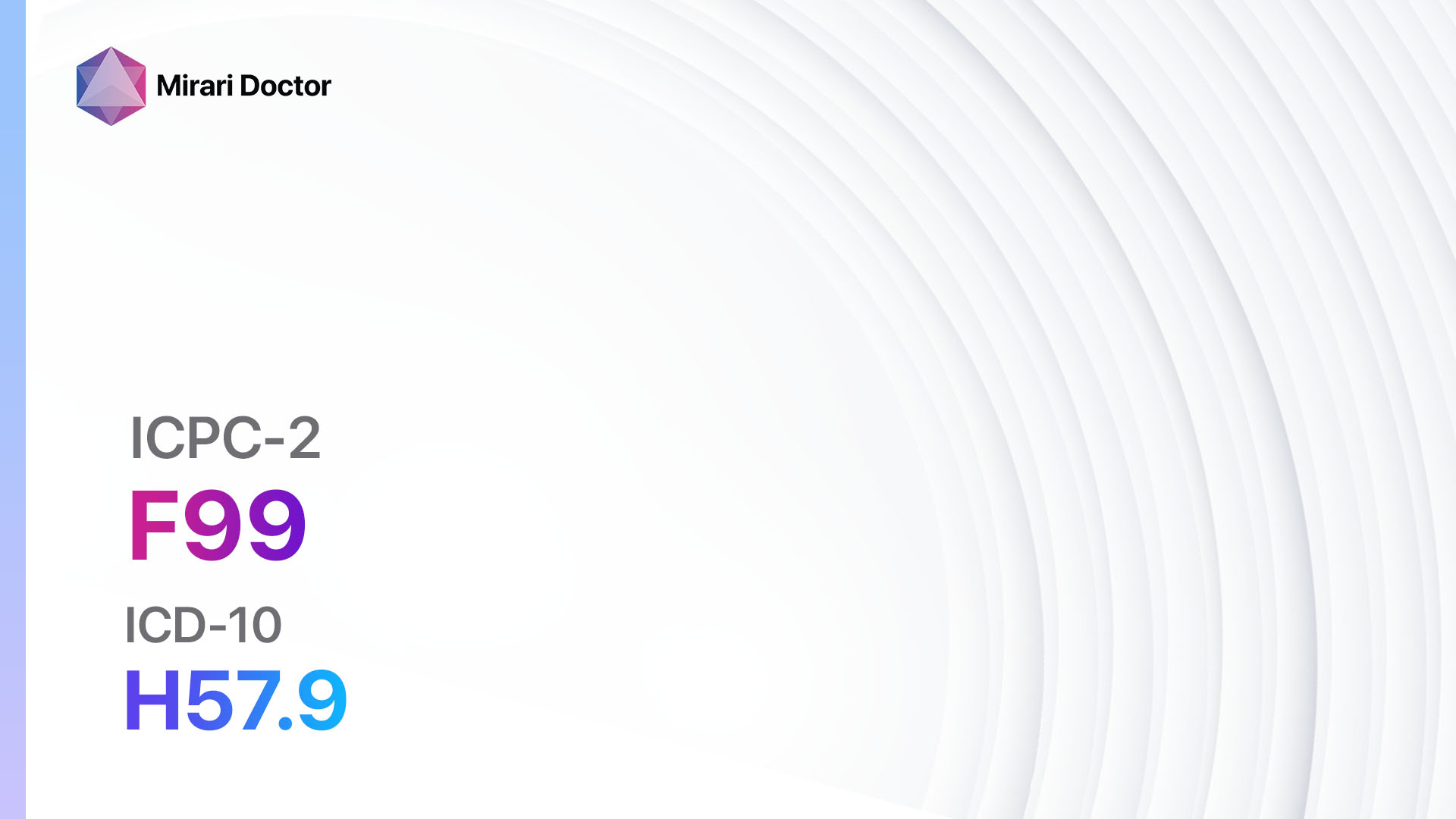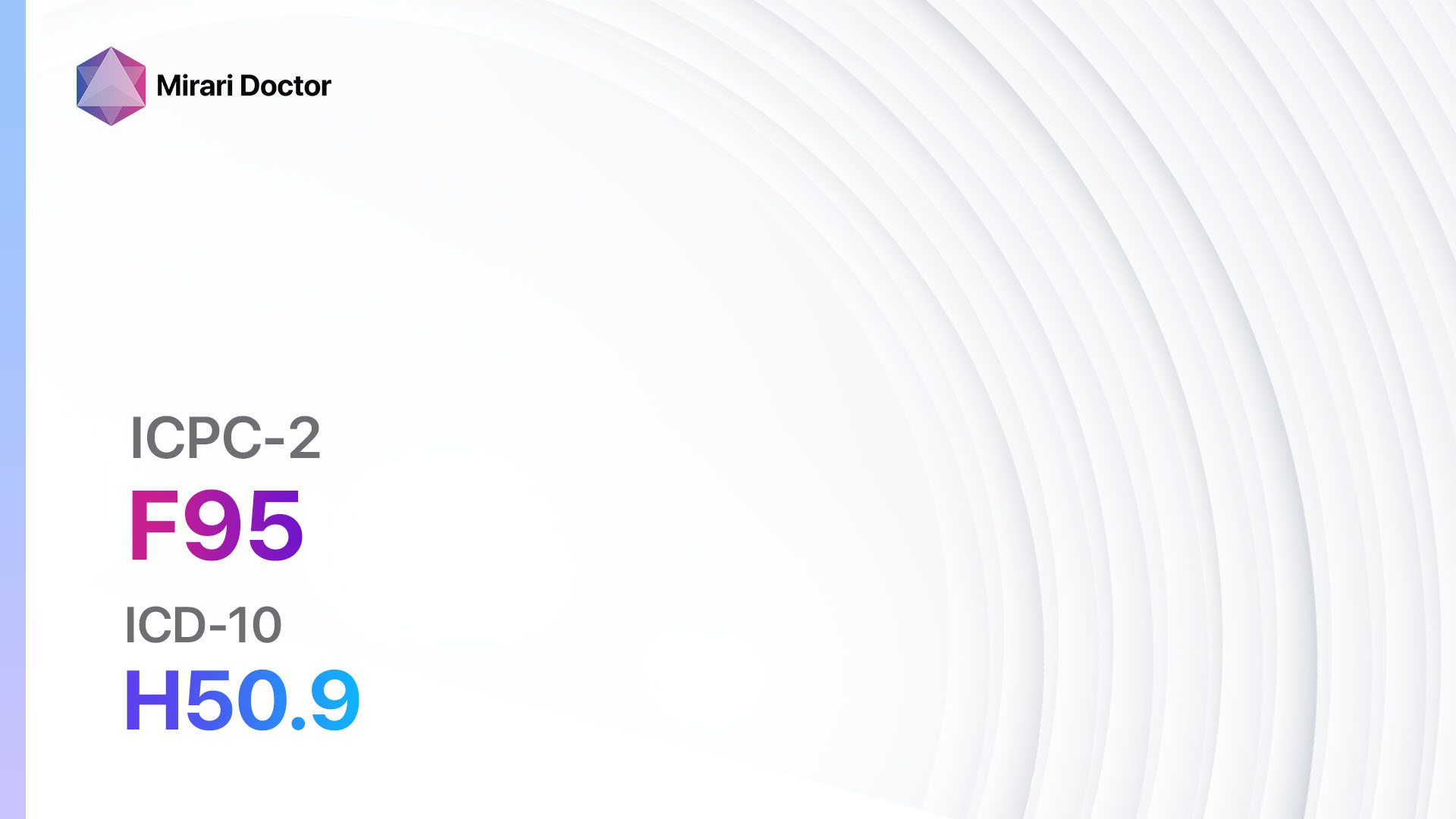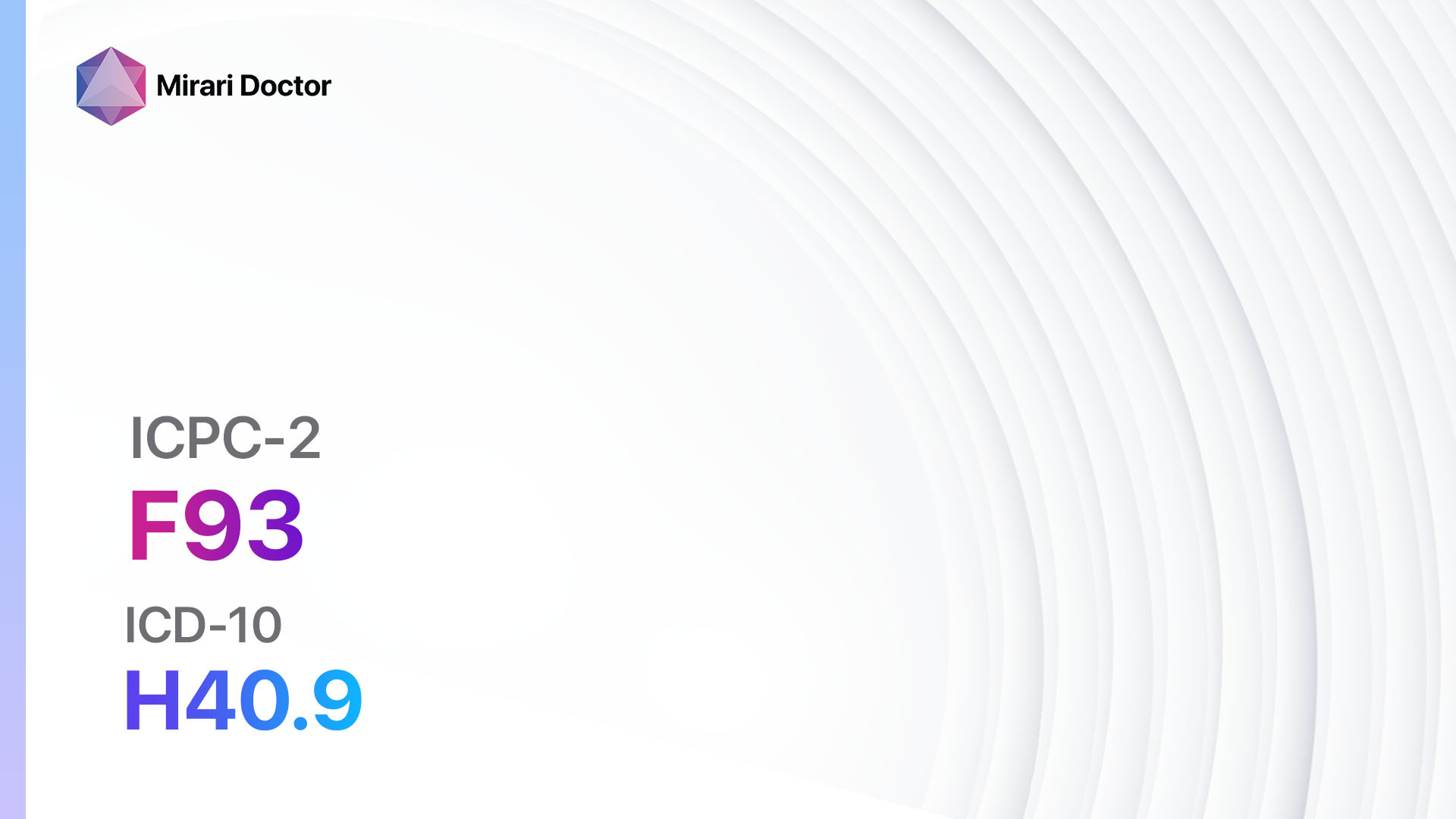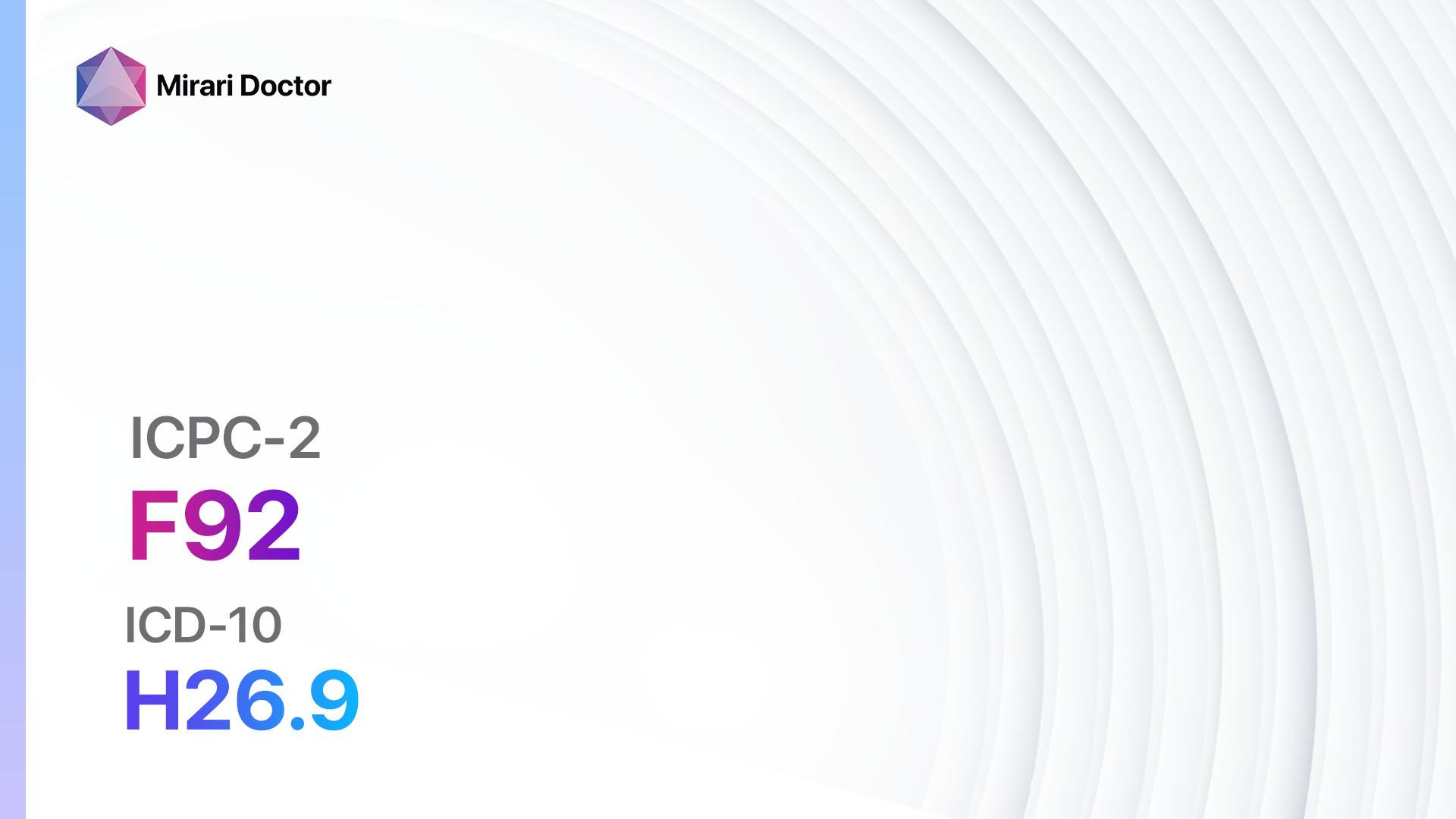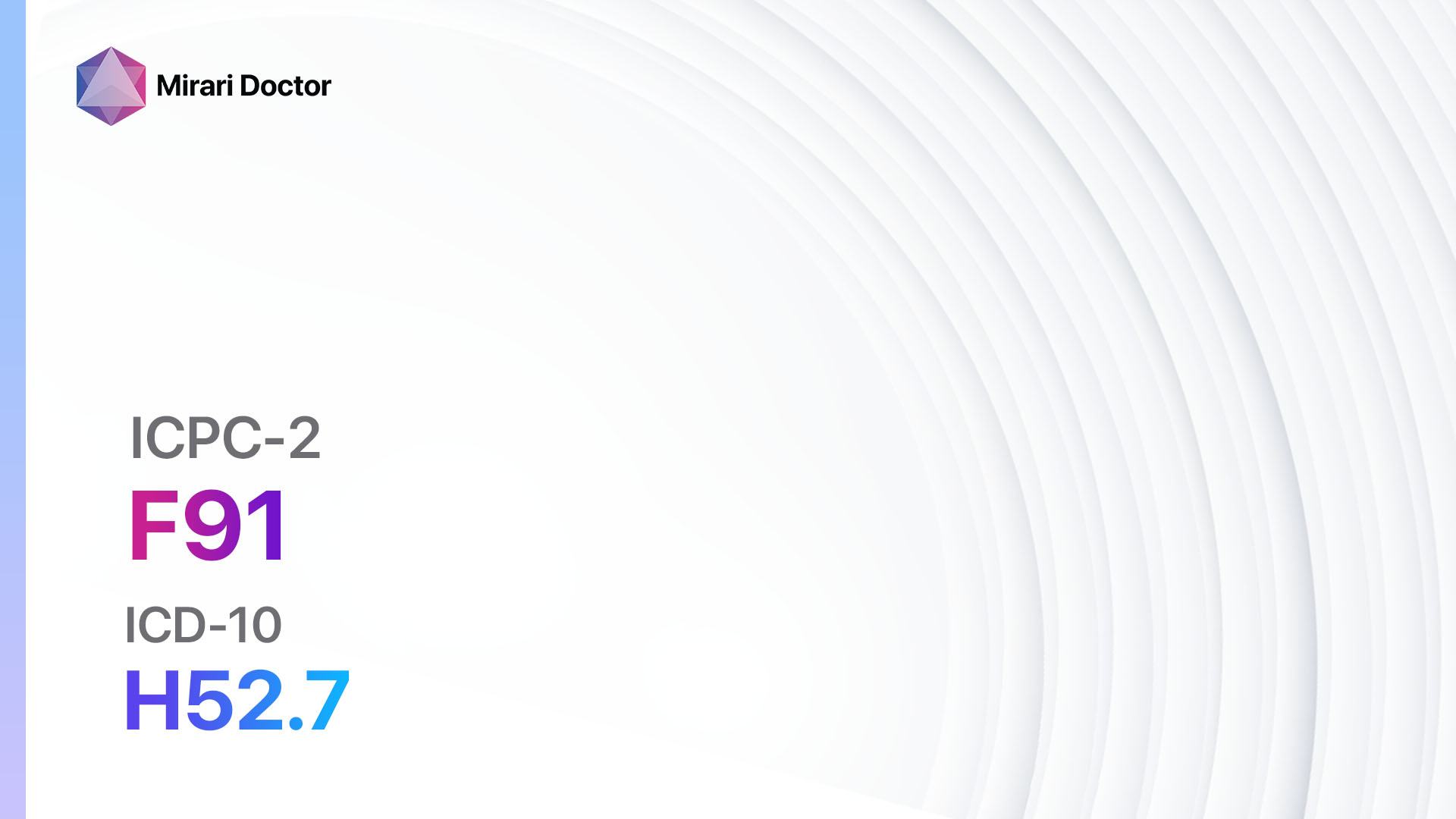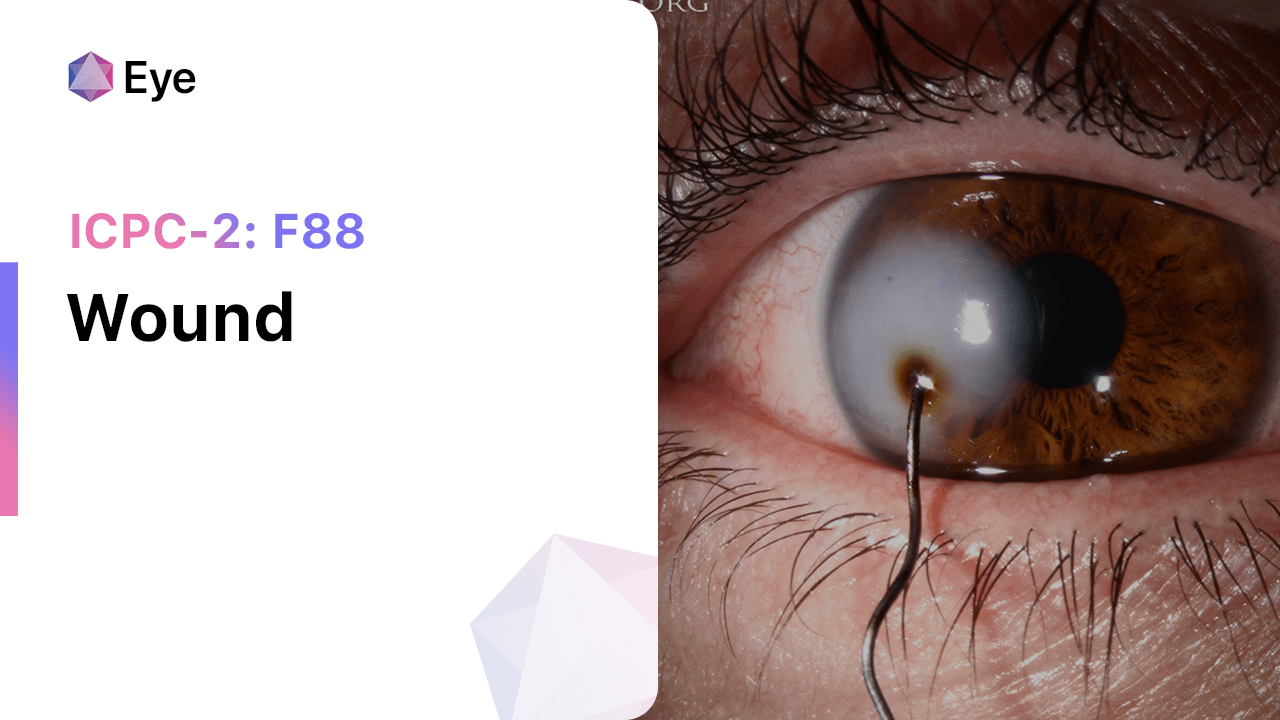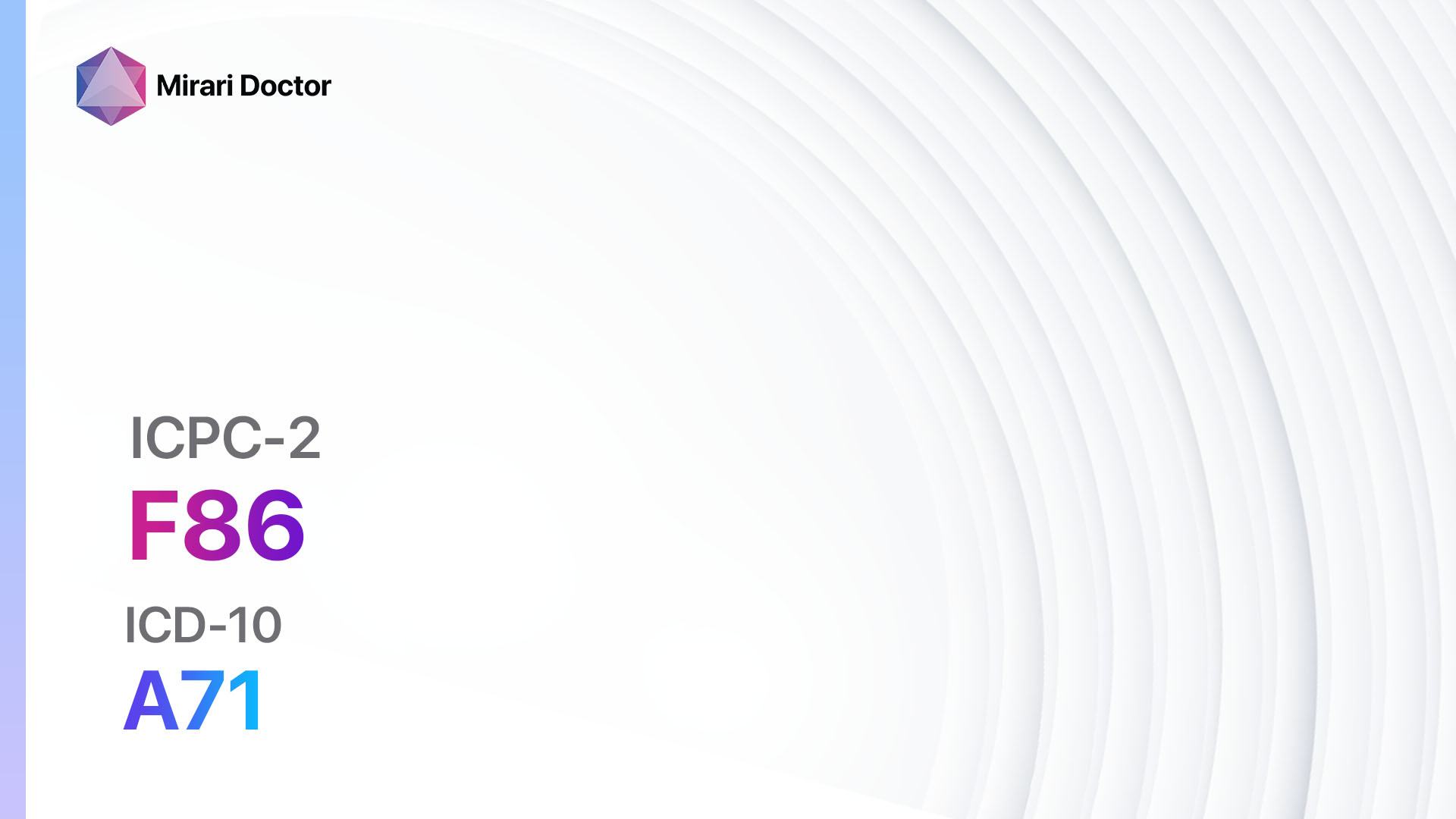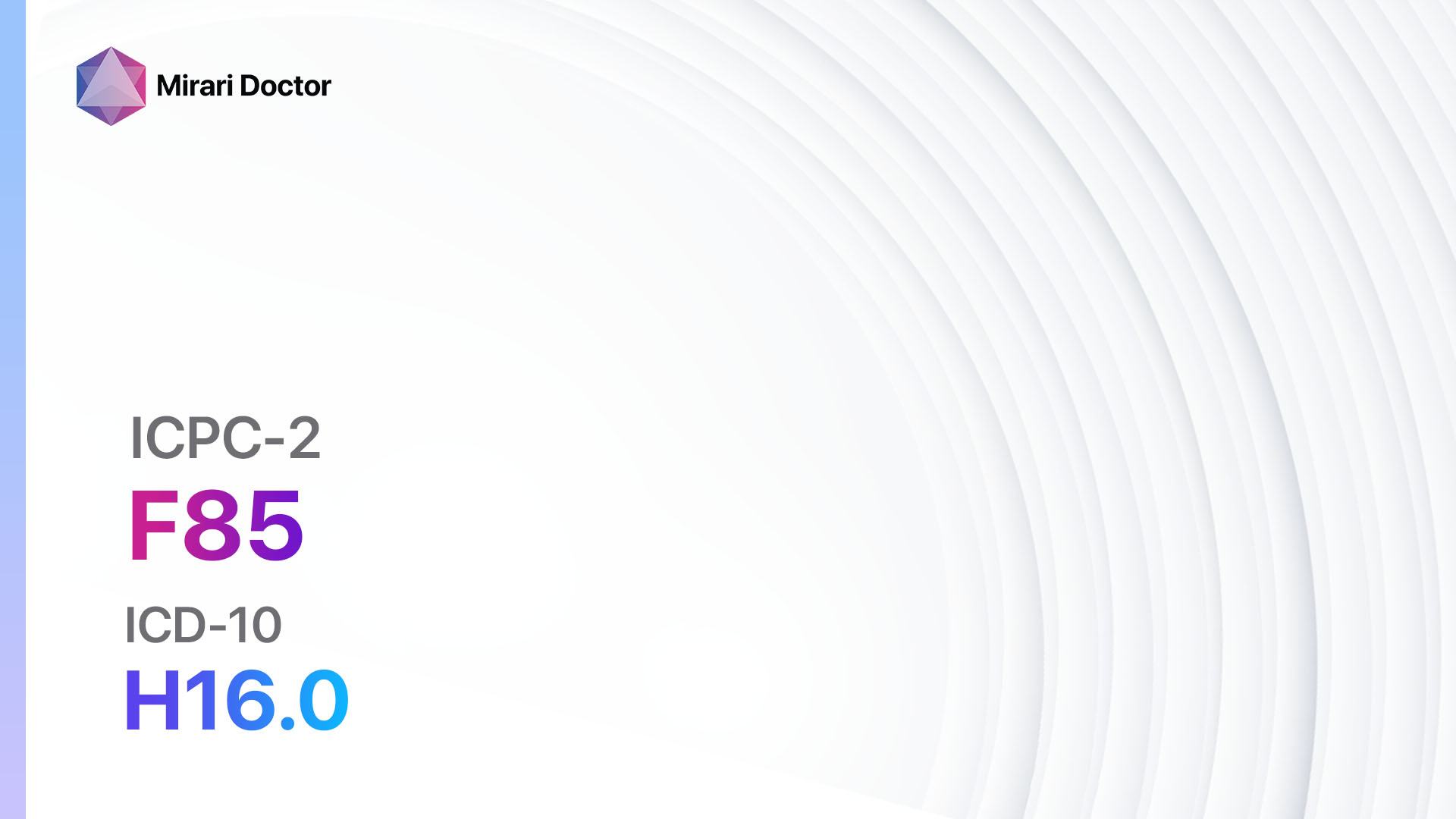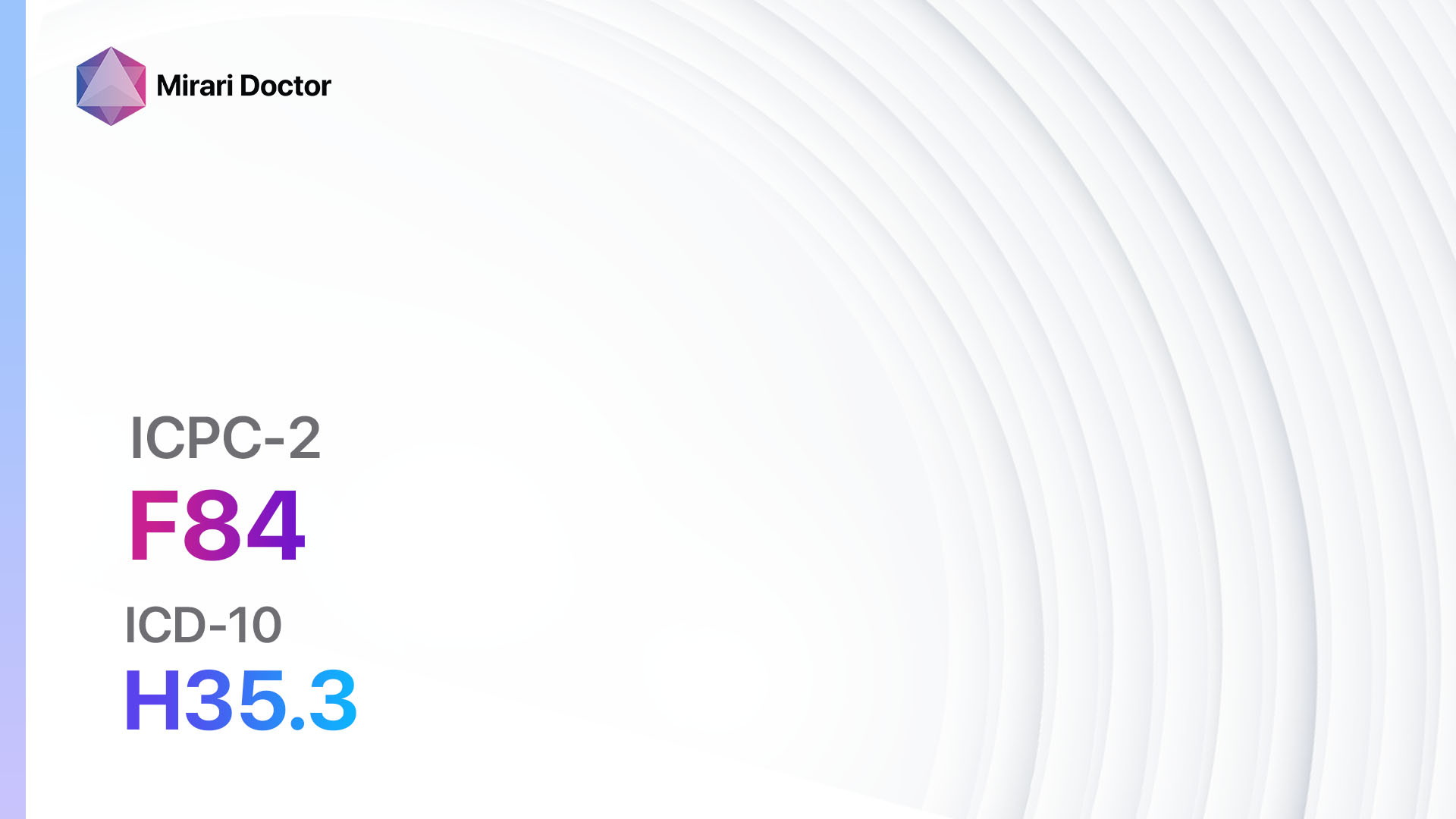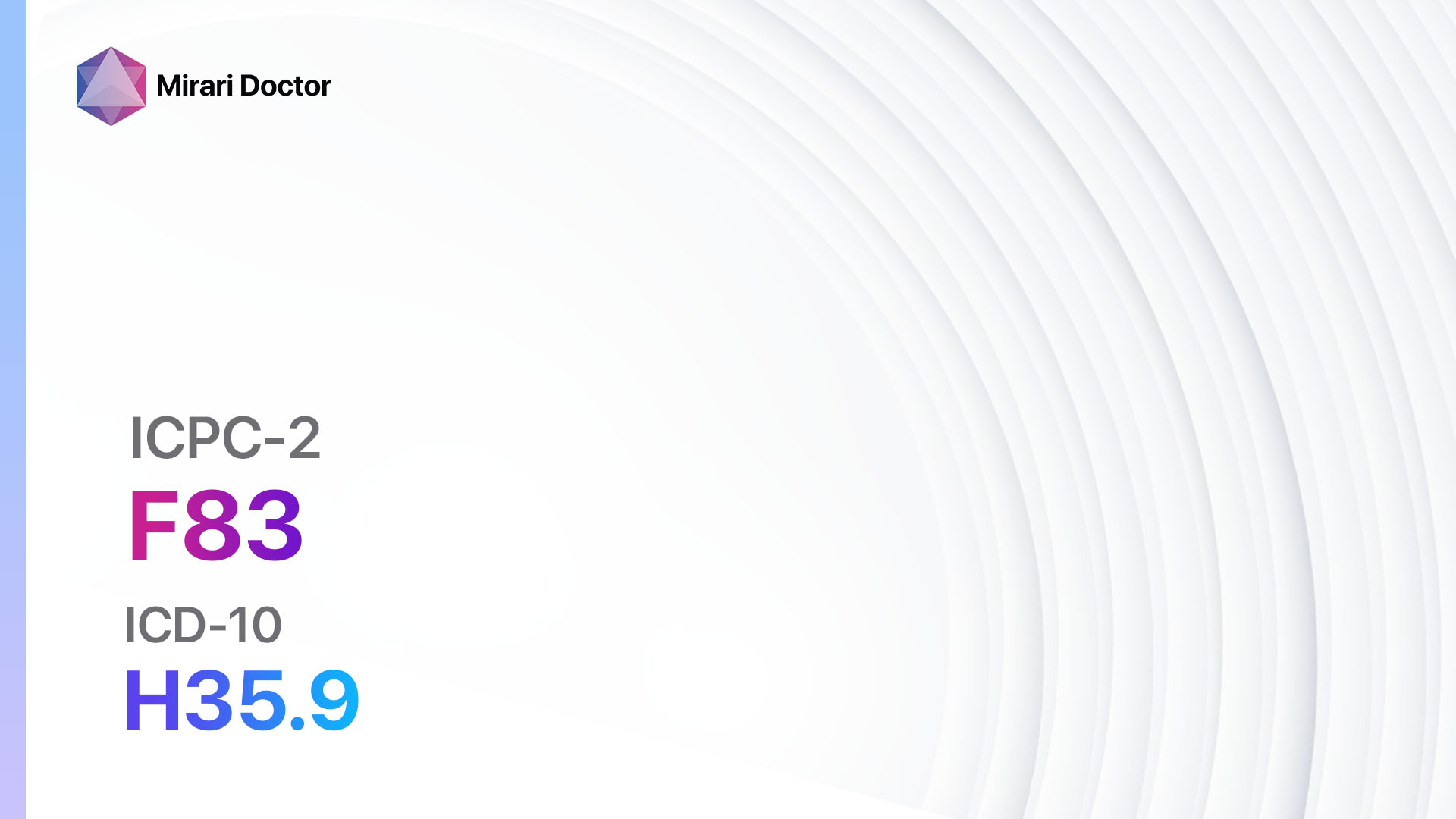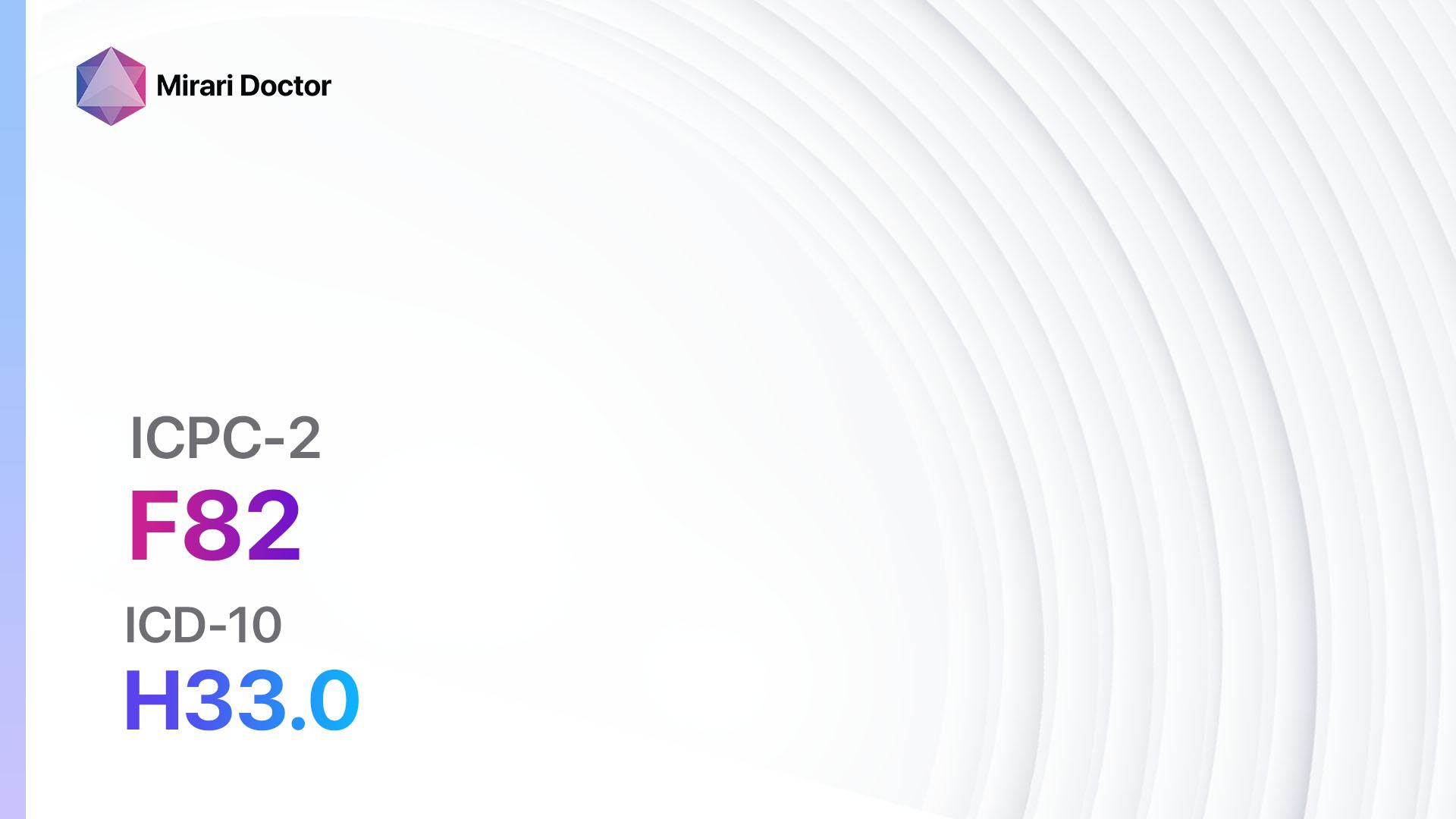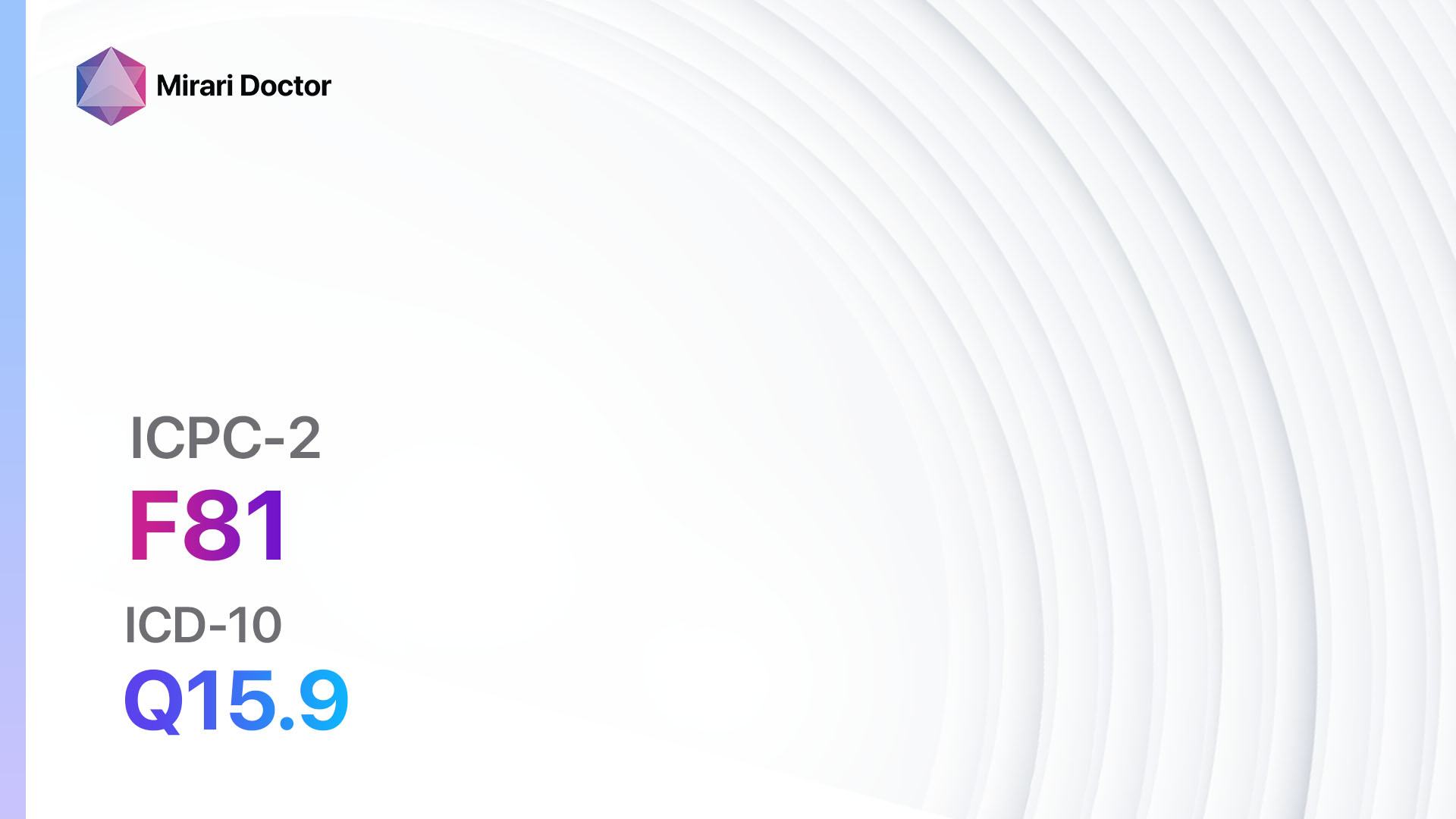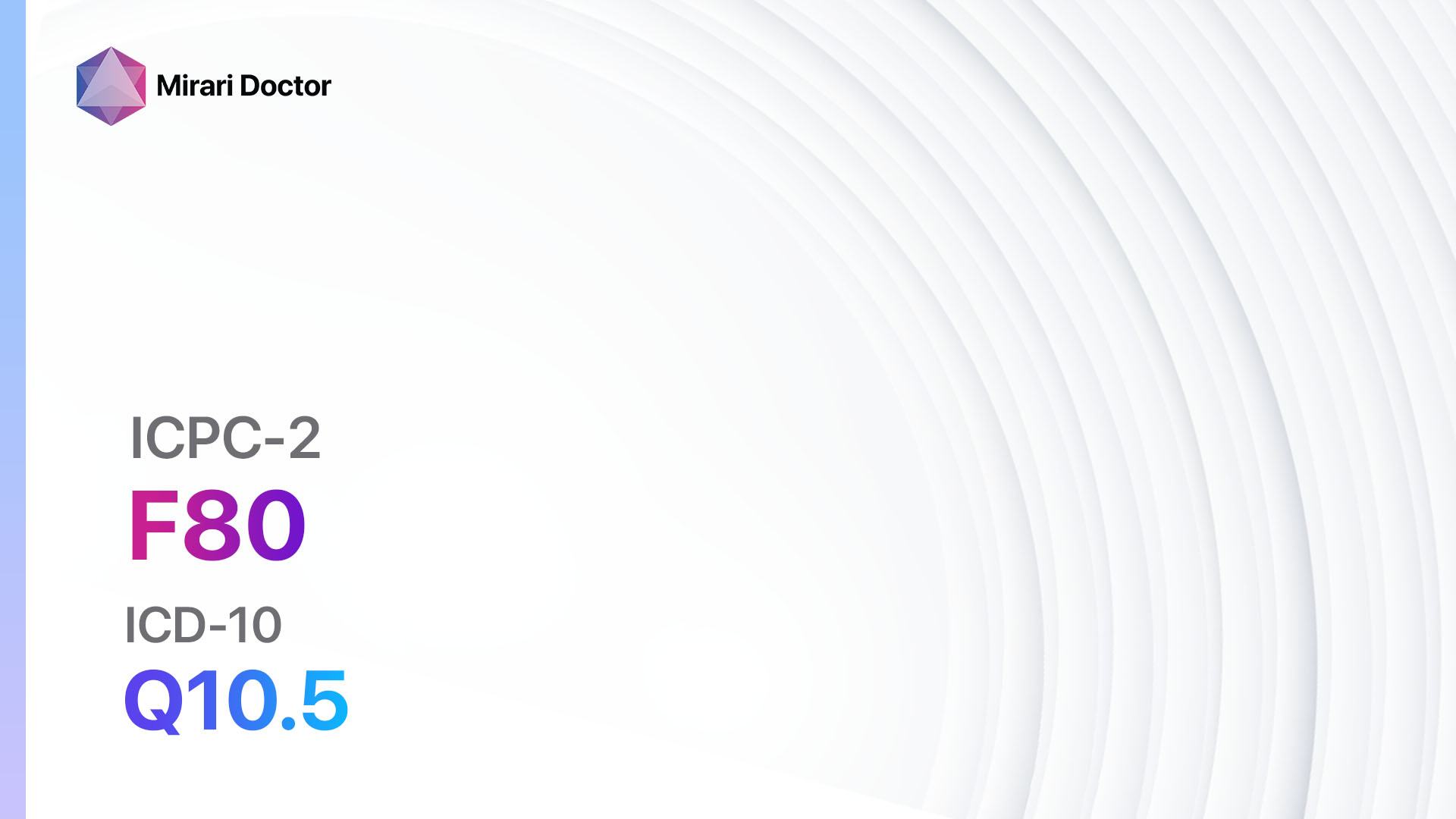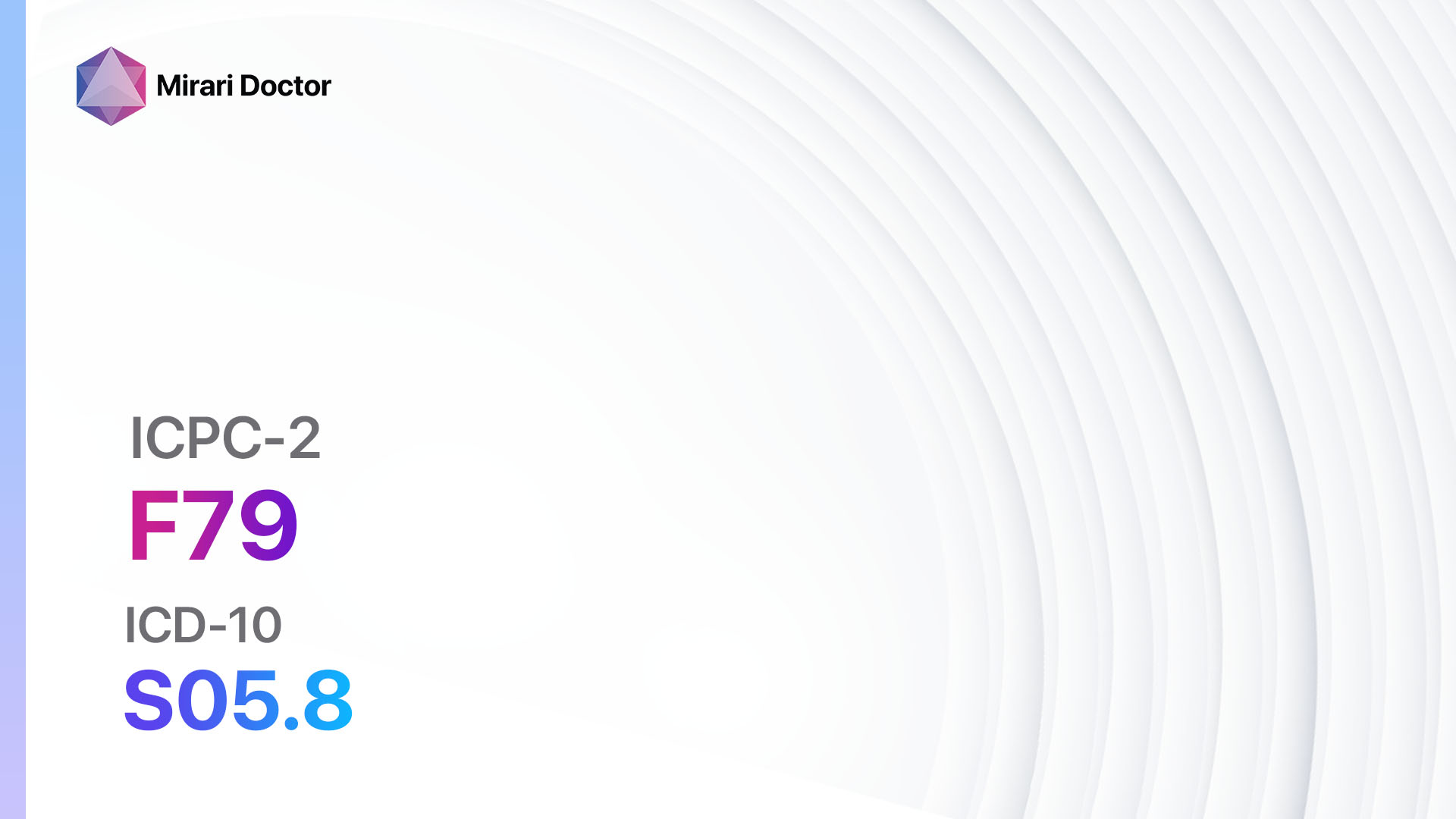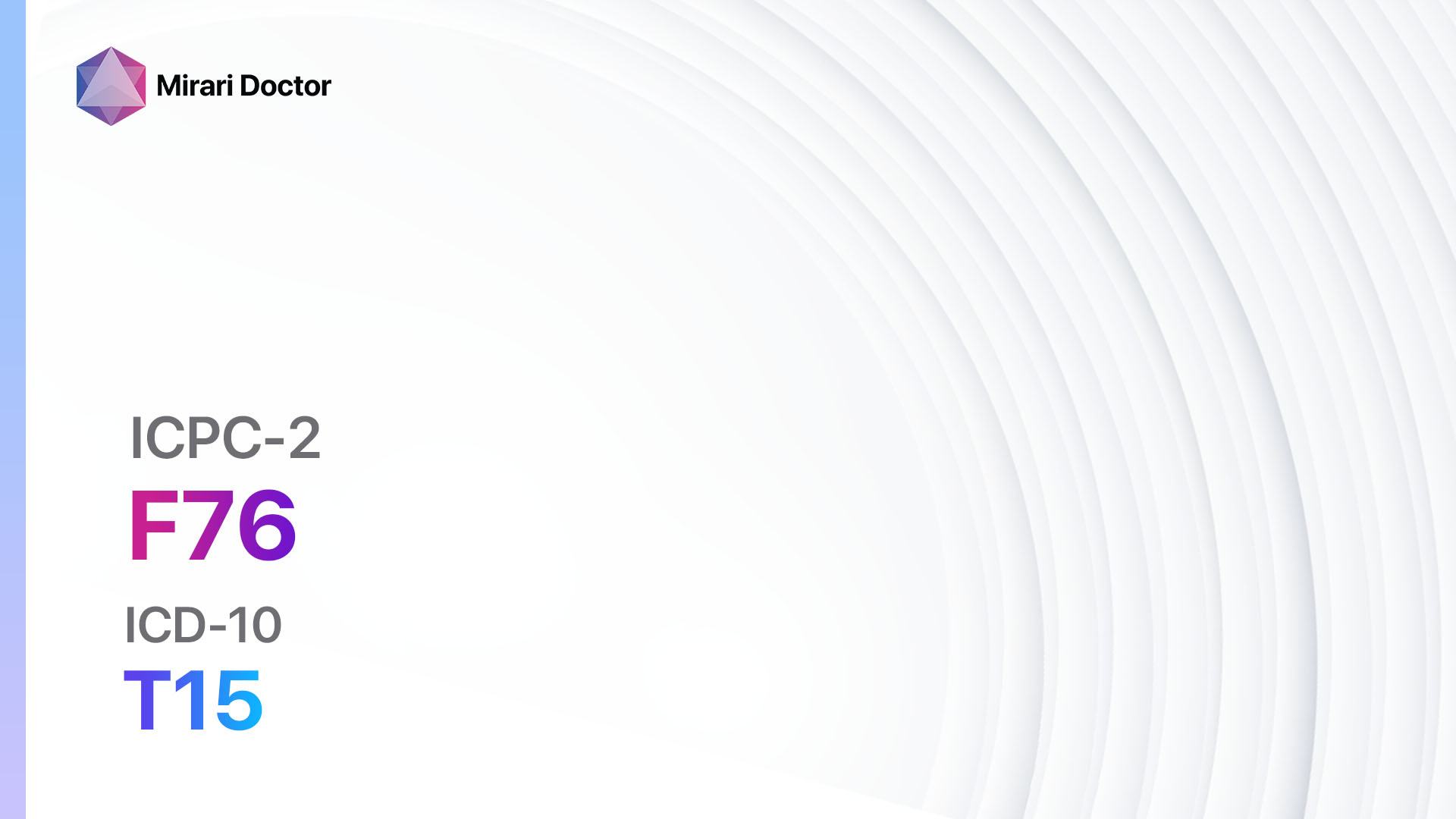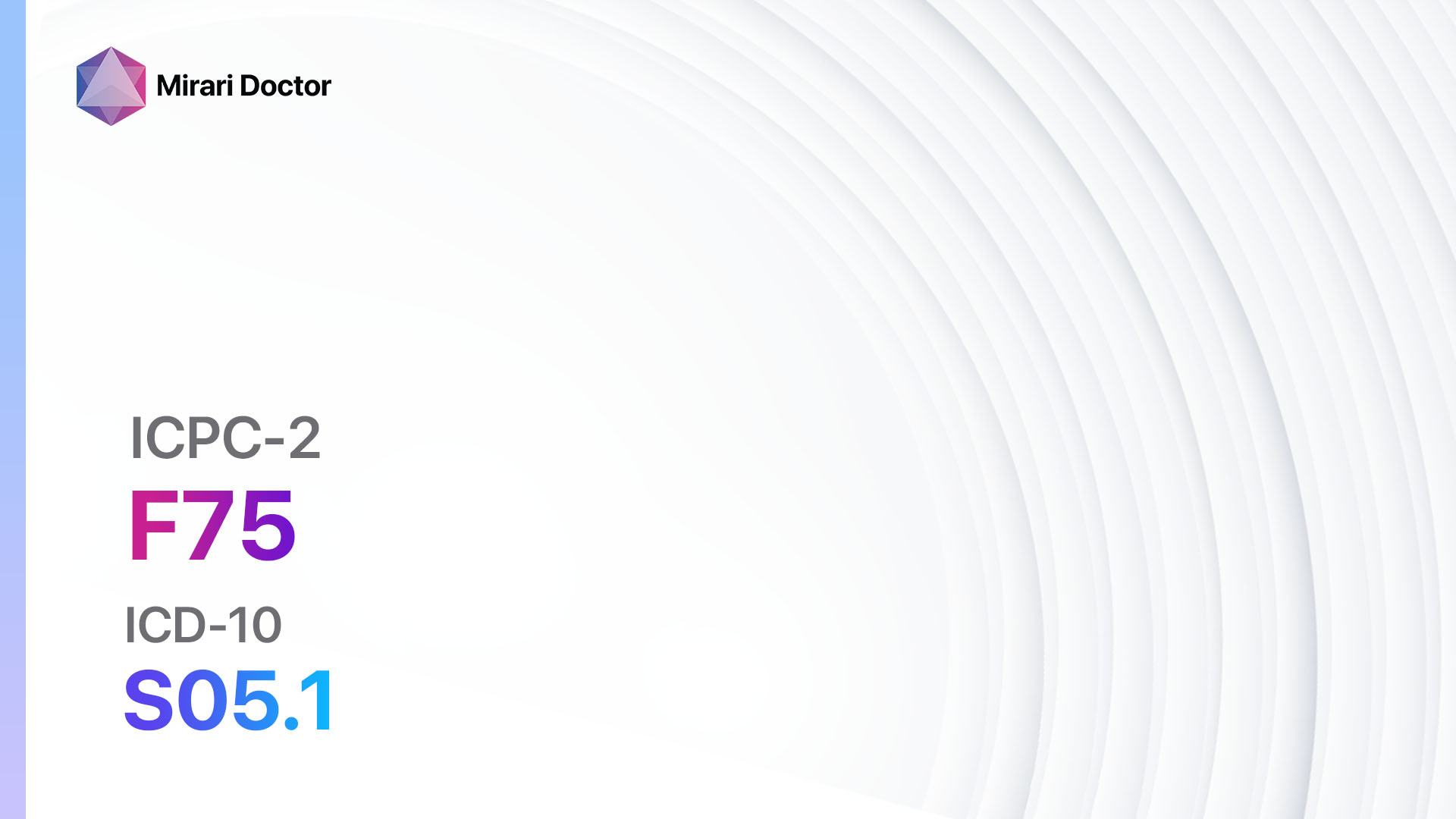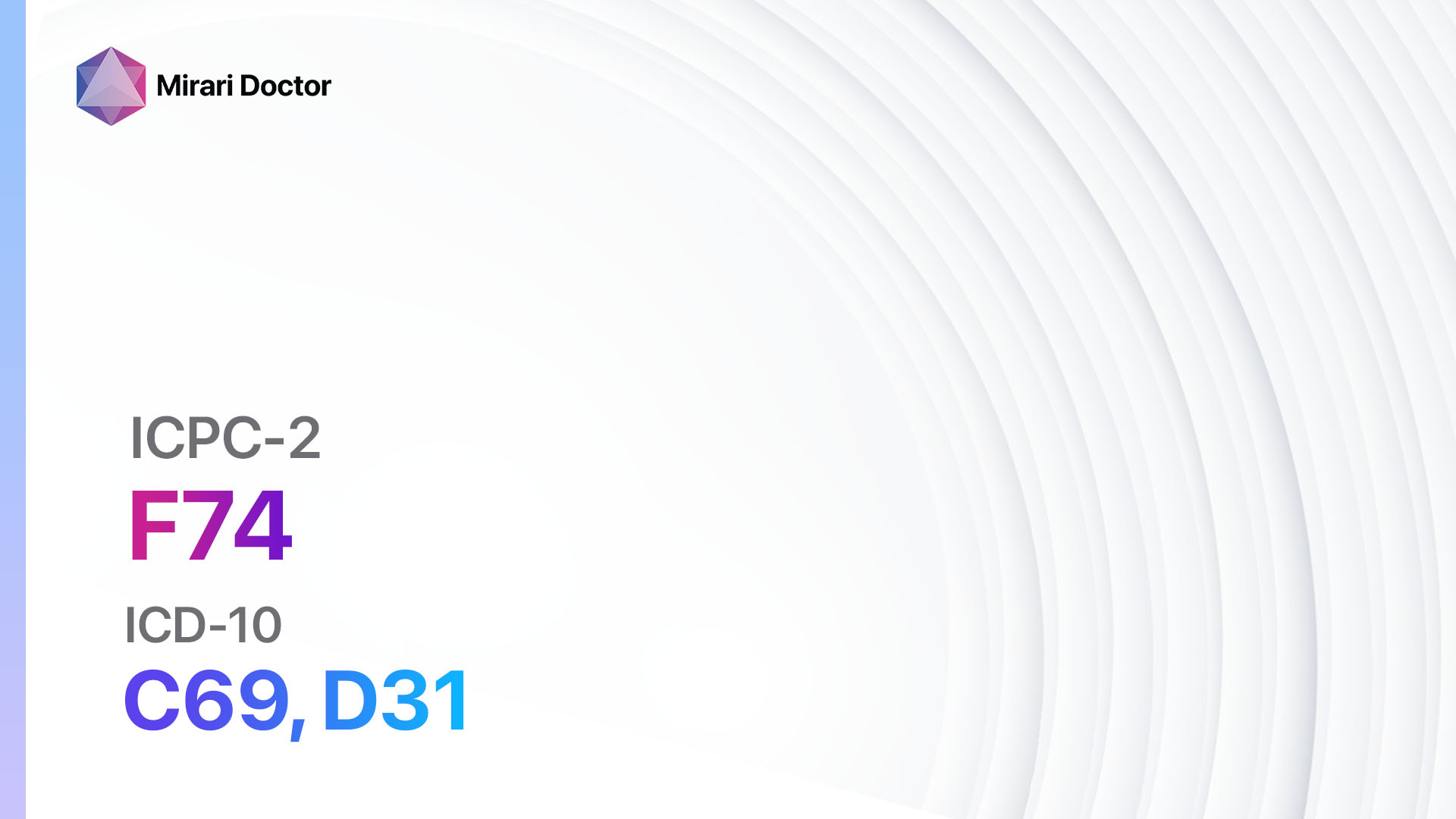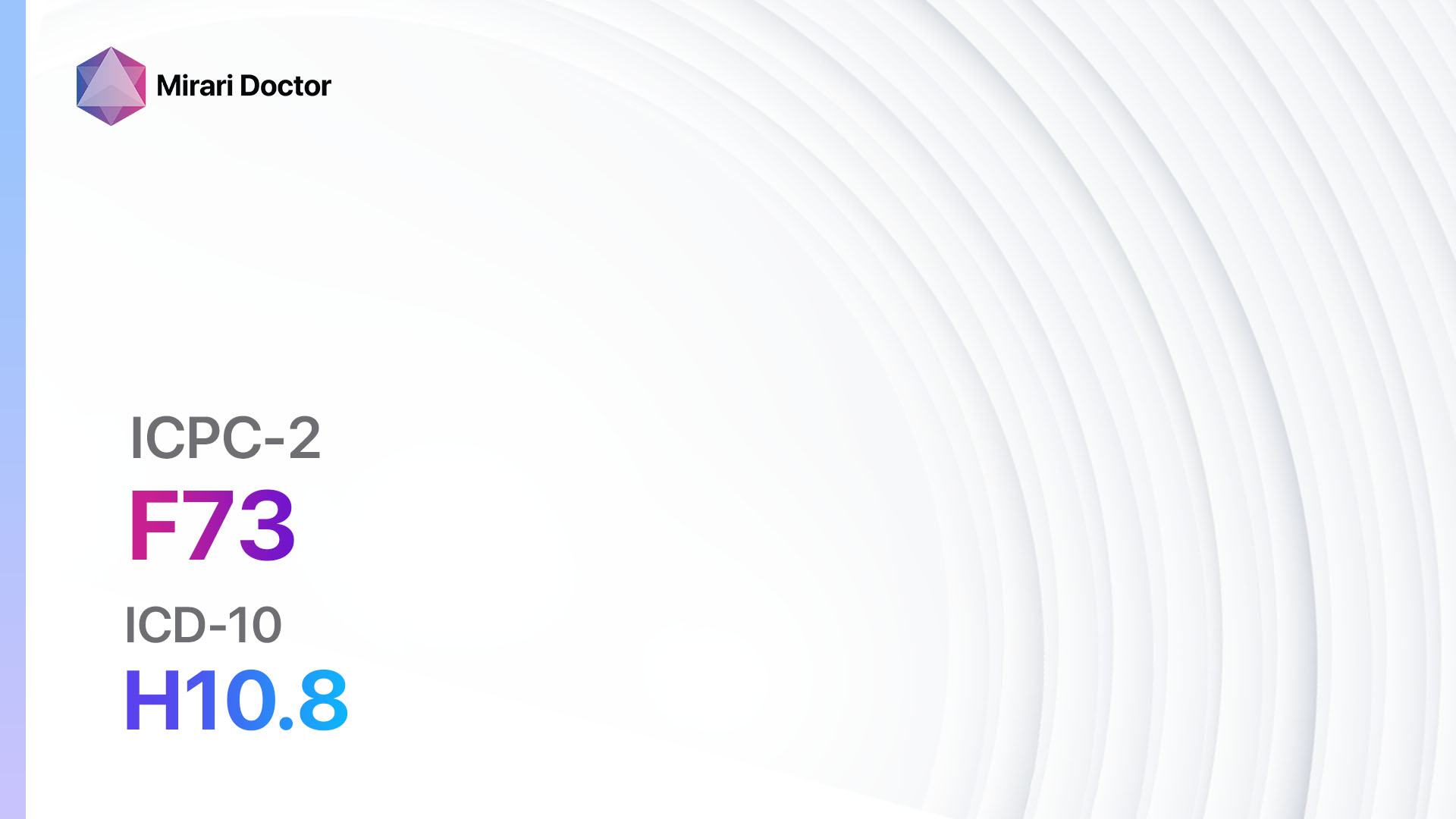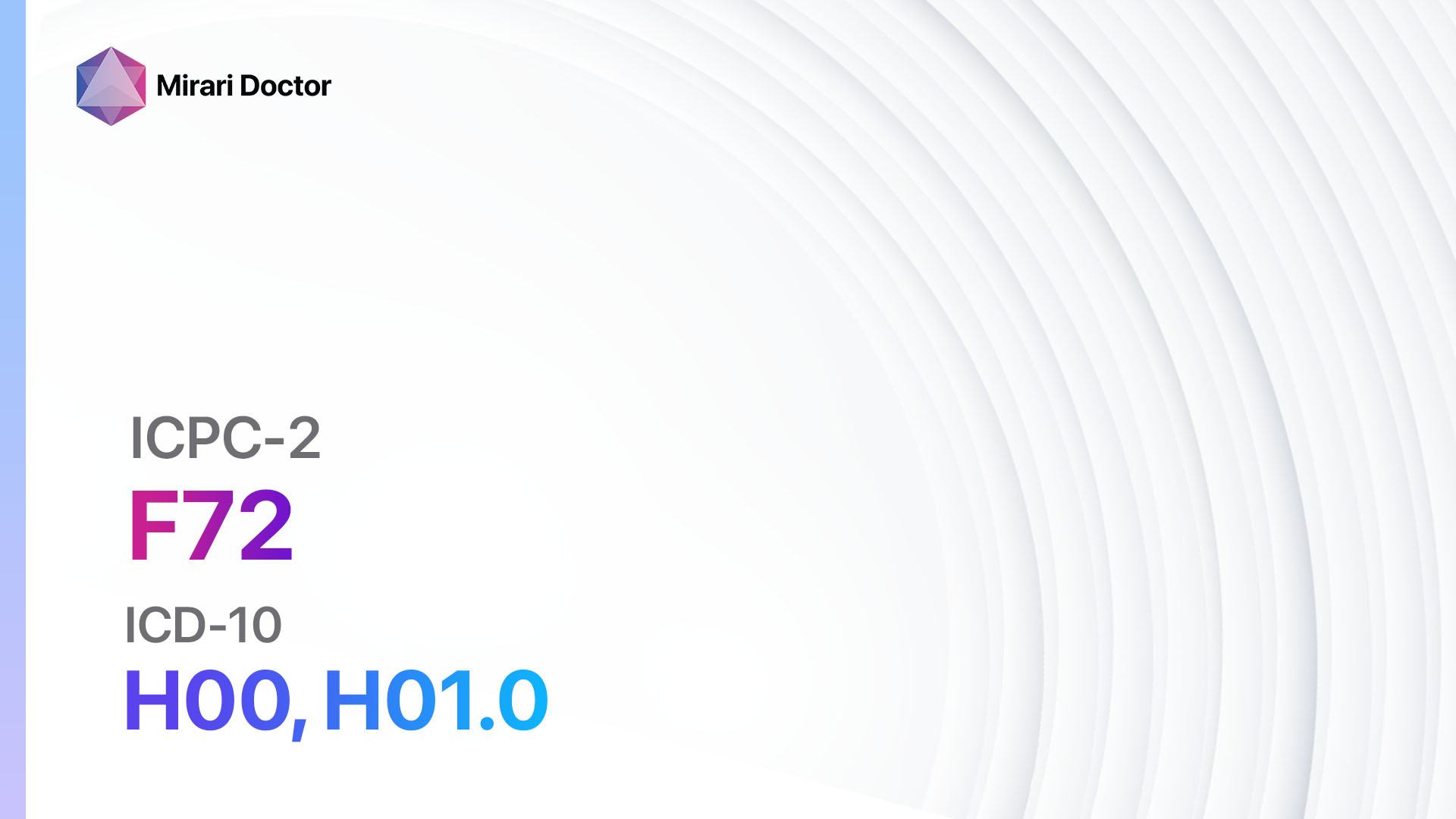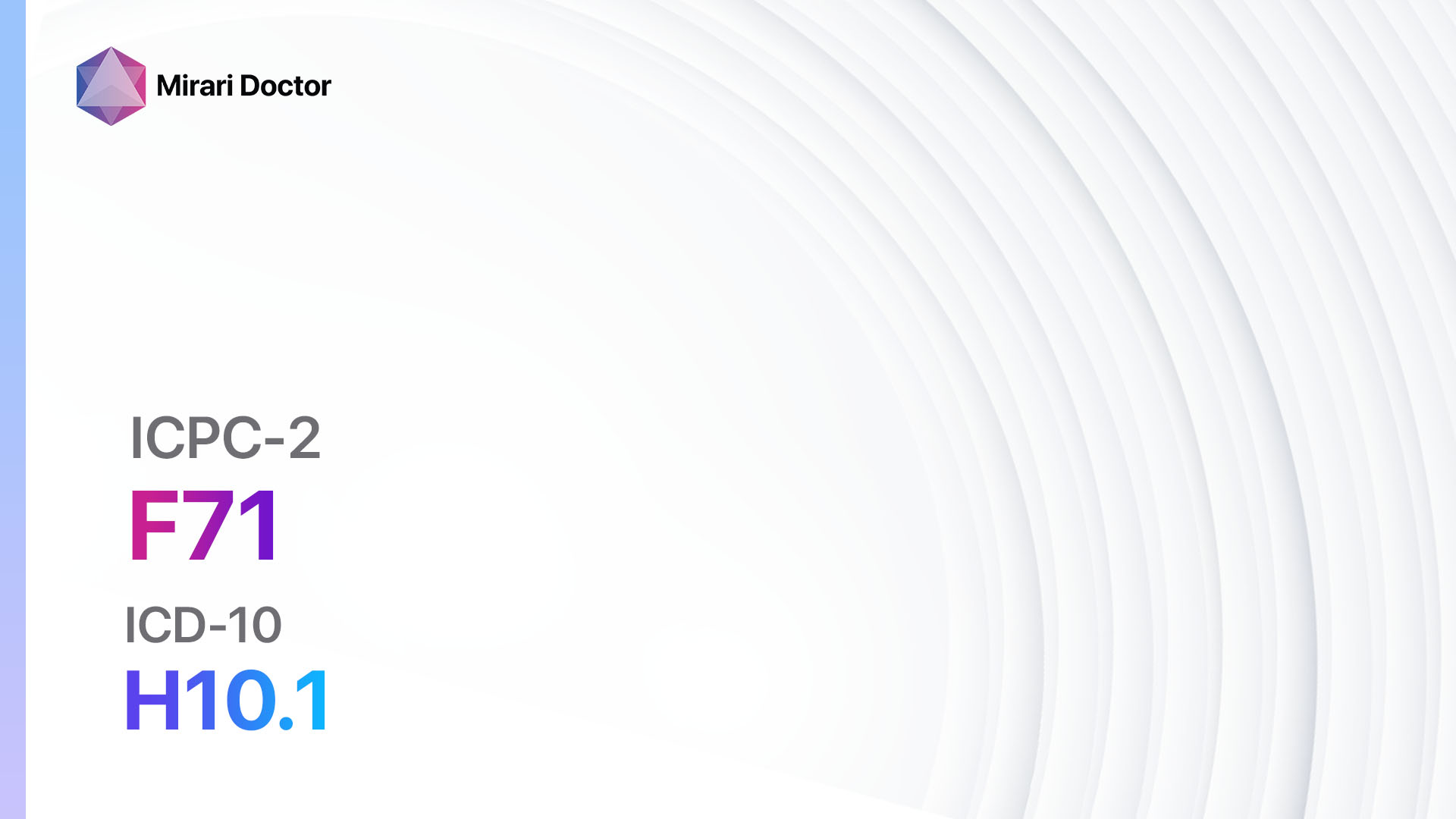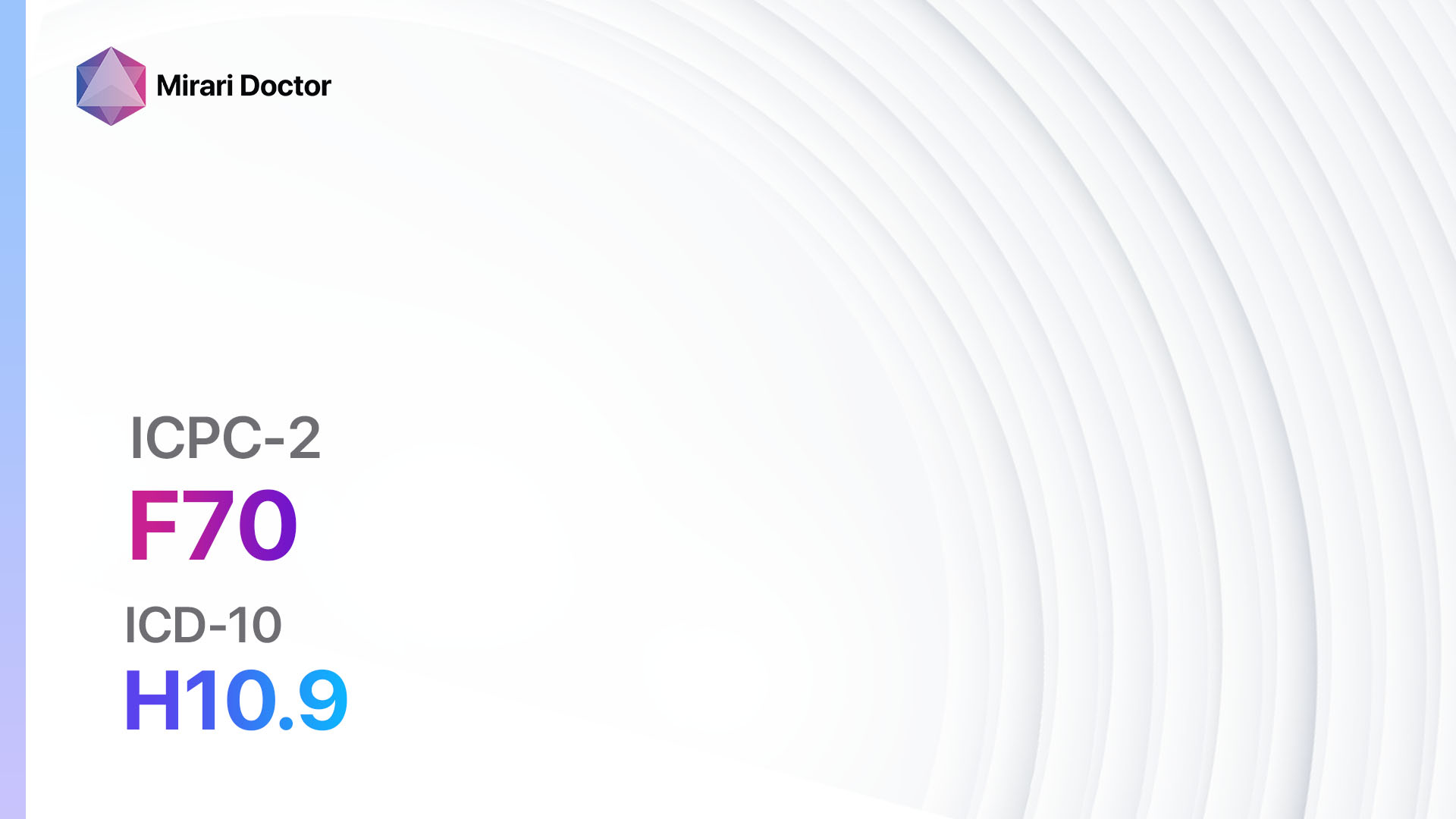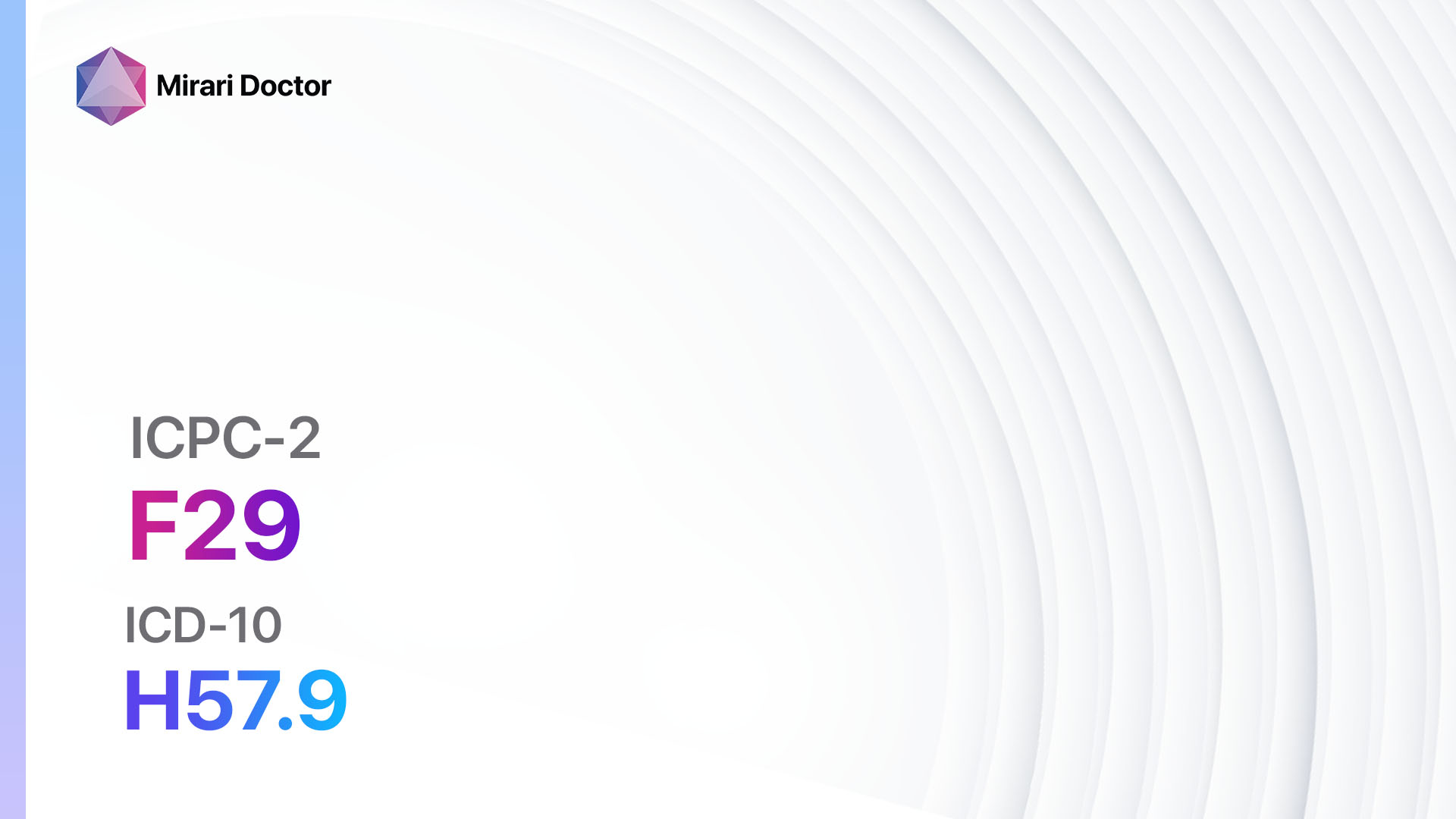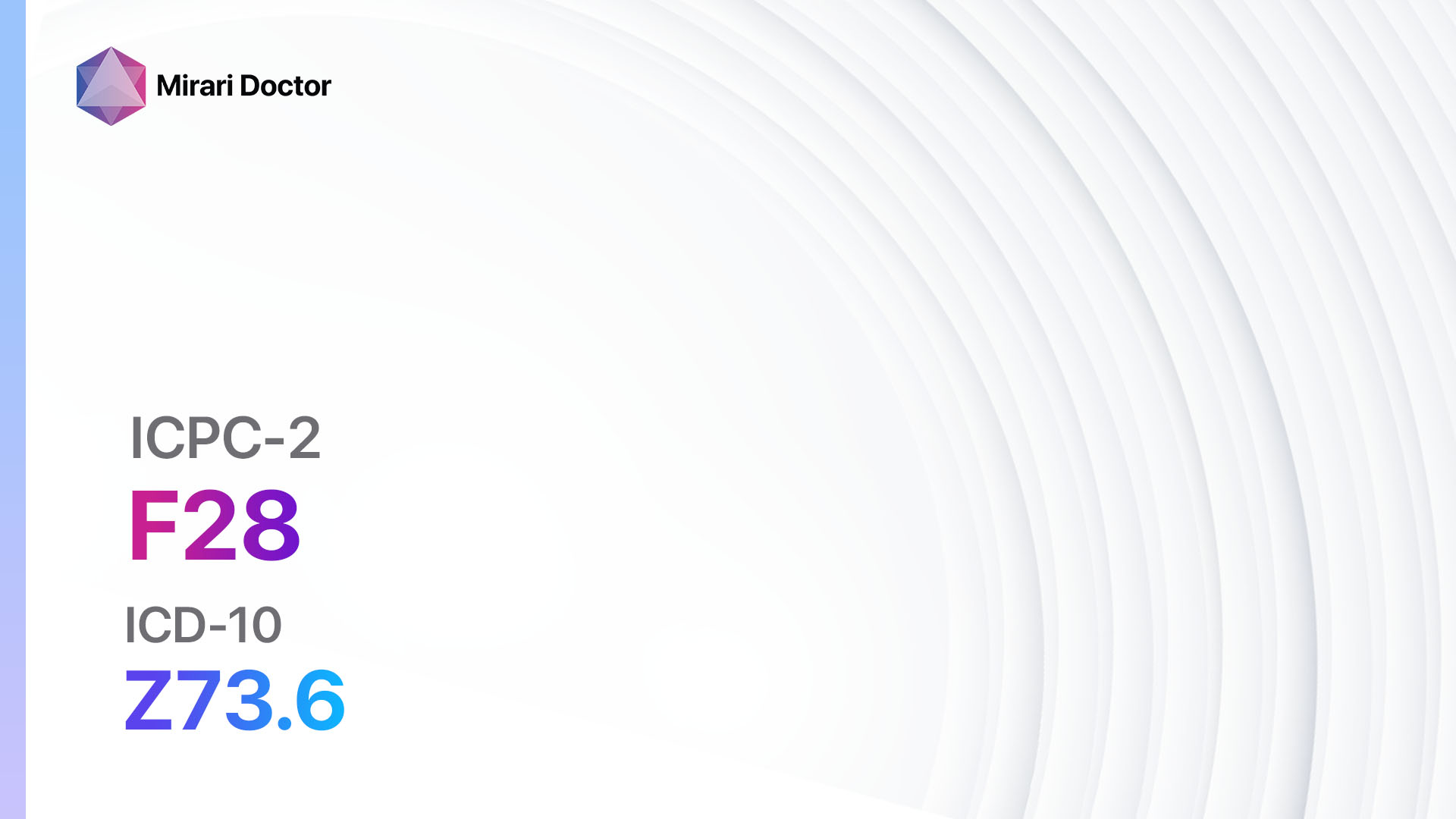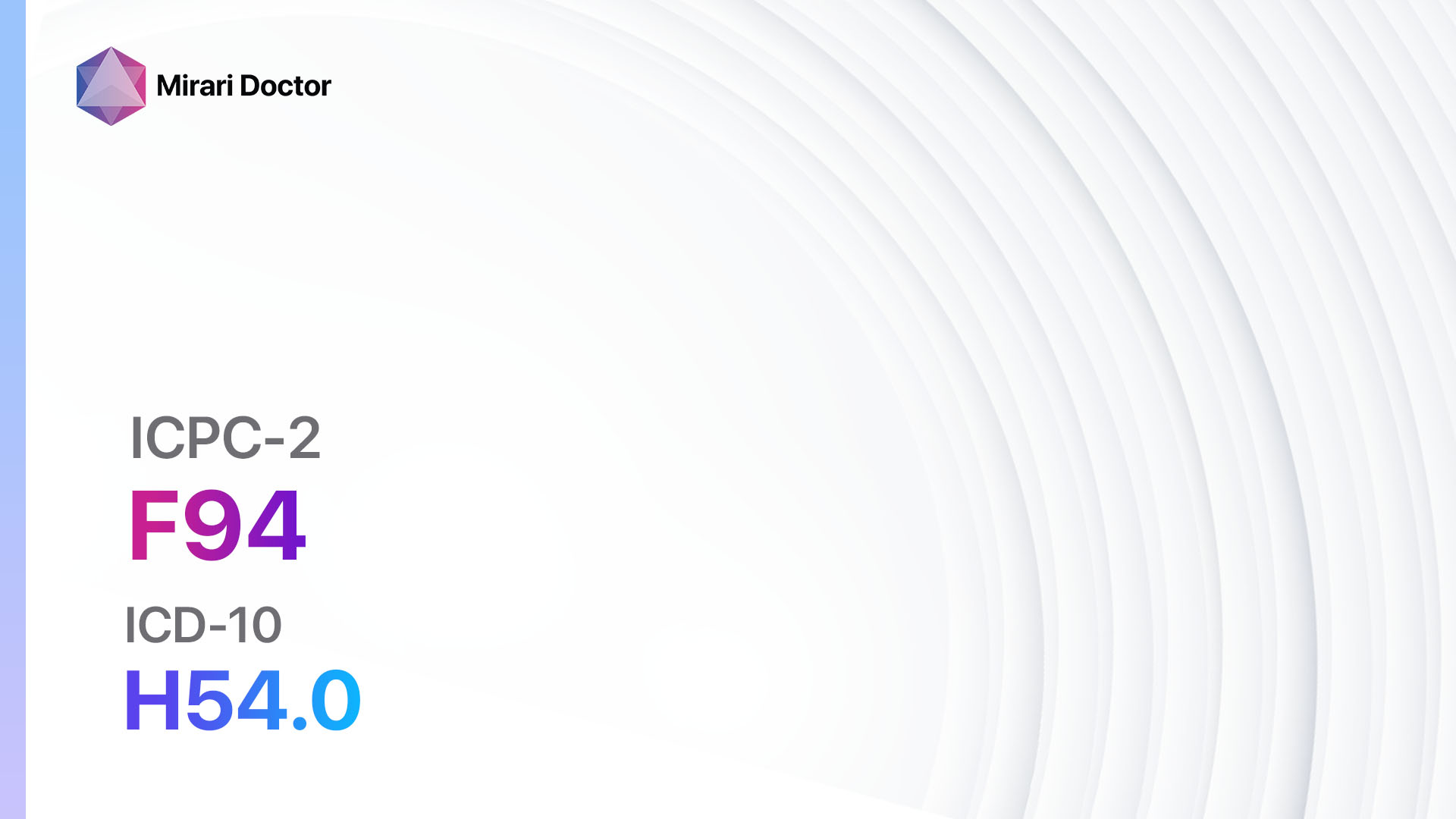
Introduction
Blindness is a condition characterized by the loss of vision, either partially or completely. It can significantly impact a person’s quality of life and independence[1]. The aim of this guide is to provide healthcare professionals with a comprehensive overview of the diagnosis and management of blindness.
Codes
Symptoms
- Loss of vision one or both eyes[4]
- Blurred or hazy vision[5]
- Difficulty seeing objects or people clearly[6]
- Sensitivity to light[7]
- Seeing flashes of light or floating spots[8]
- Eye pain or discomfort[9]
Causes
- Age-related macular degeneration (AMD)[10]
- Glaucoma
- Diabetic retinopathy
- Cataracts
- Retinal detachment
- Optic neuritis
- Trauma to the eye or head
- Infections (e.g., conjunctivitis, uveitis)
- Genetic conditions (e.g., retinitis pigmentosa)
- Stroke or other neurological conditions affecting the visual pathway
Diagnostic Steps
Medical History
- Gather information about the patient’s symptoms, including the onset, duration, and progression of vision loss.
- Inquire about any underlying medical conditions, such as diabetes or hypertension, that may contribute to visual impairment.
- Ask about any history of eye trauma or surgeries.
- Assess family history of eye diseases or genetic conditions.
Physical Examination
- Perform a comprehensive eye examination, including visual acuity testing, assessment of eye movements, and evaluation of the external and internal structures of the eye.
- Measure intraocular pressure to screen for glaucoma.
- Evaluate the pupillary response to light.
- Assess the optic nerve and retina using an ophthalmoscope.
Laboratory Tests
- Blood tests to assess blood sugar levels (for diabetic retinopathy) and cholesterol levels (for atherosclerosis-related conditions).
- Genetic testing for suspected inherited eye diseases.
- Serologic tests for infectious causes of blindness, such as syphilis or Lyme disease.
Diagnostic Imaging
- Optical coherence tomography (OCT) to visualize the layers of the retina and detect abnormalities.
- Fluorescein angiography to assess blood flow in the retina and identify areas of leakage or blockage.
- Magnetic resonance imaging (MRI) or computed tomography (CT) scan of the brain to evaluate the visual pathway and rule out neurological causes of blindness.
Other Tests
- Visual field testing to assess peripheral vision.
- Electroretinography (ERG) to evaluate the function of the retina.
- Electrooculography (EOG) to assess the function of the retinal pigment epithelium.
Follow-up and Patient Education
- Schedule regular follow-up appointments to monitor the progression of the disease and adjust treatment as needed.
- Provide education on adaptive techniques and resources for individuals with visual impairment, such as assistive devices, orientation and mobility training, and support groups.
Possible Interventions
Traditional Interventions
Medications:
Top 5 drugs for Blindness:
- Anti-VEGF agents (e.g., Ranibizumab, Bevacizumab):
- Cost: $1,500-$2,000 per injection.
- Contraindications: Hypersensitivity to the drug.
- Side effects: Eye pain, redness, increased intraocular pressure.
- Severe side effects: Retinal detachment, endophthalmitis.
- Drug interactions: None reported.
- Warning: Regular monitoring of intraocular pressure and retinal status required.
- Corticosteroids (e.g., Prednisolone, Dexamethasone):
- Cost: $10-$50 per bottle.
- Contraindications: Active eye infections, glaucoma.
- Side effects: Increased intraocular pressure, cataract formation.
- Severe side effects: Retinal detachment, delayed wound healing.
- Drug interactions: None reported.
- Warning: Long-term use may require monitoring for systemic side effects.
- Antiviral agents (e.g., Acyclovir, Valacyclovir):
- Cost: $20-$100 per prescription.
- Contraindications: Hypersensitivity to the drug.
- Side effects: Nausea, headache, dizziness.
- Severe side effects: Renal impairment, neurotoxicity.
- Drug interactions: None reported.
- Warning: Dose adjustment may be necessary in patients with renal impairment.
- Antibiotics (e.g., Tobramycin, Ciprofloxacin):
- Cost: $10-$50 per prescription.
- Contraindications: Hypersensitivity to the drug.
- Side effects: Eye irritation, burning sensation.
- Severe side effects: Corneal ulceration, allergic reactions.
- Drug interactions: None reported.
- Warning: Avoid prolonged use to prevent antibiotic resistance.
- Immunosuppressive agents (e.g., Methotrexate, Cyclosporine):
- Cost: $50-$200 per prescription.
- Contraindications: Active infections, malignancy.
- Side effects: Nausea, vomiting, increased risk of infections.
- Severe side effects: Bone marrow suppression, hepatotoxicity.
- Drug interactions: Many potential interactions, consult a pharmacist.
- Warning: Regular monitoring of blood counts and liver function required.
Surgical Procedures:
- Cataract surgery: Removal of the cloudy lens and replacement with an artificial lens. Cost: $3,000-$5,000 per eye.
- Vitrectomy: Removal of the vitreous gel in the eye to treat conditions such as retinal detachment or vitreous hemorrhage. Cost: $5,000-$10,000 per eye.
- Corneal transplant: Replacement of a damaged or diseased cornea with a healthy donor cornea. Cost: $10,000-$15,000 per eye.
Alternative Interventions
- Acupuncture: May help improve blood flow and reduce pain. Cost: $60-$120 per session.
- Herbal supplements: Some herbs, such as bilberry and ginkgo biloba, are believed to have potential benefits for eye health. Cost: Varies depending on the specific supplement.
- Low vision aids: Devices such as magnifiers, telescopes, and electronic visual aids can help individuals with visual impairment maximize their remaining vision. Cost: Varies depending on the specific device.
- Vision rehabilitation therapy: Training programs that teach individuals with visual impairment how to perform daily activities and navigate their environment. Cost: $100-$200 per session.
Lifestyle Interventions
- Dietary modifications: Consuming a diet rich in antioxidants, omega-3 fatty acids, and vitamins A, C, and E may support eye health. Cost: Varies depending on food choices.
- Regular exercise: Engaging in physical activity can improve blood circulation and overall health, which may benefit eye health. Cost: Varies depending on the chosen exercise regimen.
- Smoking cessation: Quitting smoking can reduce the risk of developing certain eye diseases, such as AMD. Cost: Varies depending on the chosen smoking cessation method.
- UV protection: Wearing sunglasses and hats with brims can help protect the eyes from harmful UV radiation. Cost: Varies depending on the chosen eyewear.
It is important to note that the cost ranges provided are approximate and may vary depending on the location and availability of the interventions.
Mirari Cold Plasma Alternative Intervention
Understanding Mirari Cold Plasma
- Safe and Non-Invasive Treatment: Mirari Cold Plasma is a safe and non-invasive treatment option for various skin conditions. It does not require incisions, minimizing the risk of scarring, bleeding, or tissue damage.
- Efficient Extraction of Foreign Bodies: Mirari Cold Plasma facilitates the removal of foreign bodies from the skin by degrading and dissociating organic matter, allowing easier access and extraction.
- Pain Reduction and Comfort: Mirari Cold Plasma has a local analgesic effect, providing pain relief during the treatment, making it more comfortable for the patient.
- Reduced Risk of Infection: Mirari Cold Plasma has antimicrobial properties, effectively killing bacteria and reducing the risk of infection.
- Accelerated Healing and Minimal Scarring: Mirari Cold Plasma stimulates wound healing and tissue regeneration, reducing healing time and minimizing the formation of scars.
Mirari Cold Plasma Prescription
Video instructions for using Mirari Cold Plasma Device – F94 Blindness (ICD-10:H54.0)
| Mild | Moderate | Severe |
| Mode setting: 1 (Infection) Location: 7 (Neuro system & ENT) Morning: 15 minutes, Evening: 15 minutes | Mode setting: 1 (Infection) Location: 7 (Neuro system & ENT) Morning: 30 minutes, Lunch: 30 minutes, Evening: 30 minutes | Mode setting: 1 (Infection) Location: 7 (Neuro system & ENT) Morning: 30 minutes, Lunch: 30 minutes, Evening: 30 minutes |
| Mode setting: 2 (Wound Healing) Location: 7 (Neuro system & ENT) Morning: 15 minutes, Evening: 15 minutes | Mode setting: 2 (Wound Healing) Location: 7 (Neuro system & ENT) Morning: 30 minutes, Lunch: 30 minutes, Evening: 30 minutes | Mode setting: 2 (Wound Healing) Location: 7 (Neuro system & ENT) Morning: 30 minutes, Lunch: 30 minutes, Evening: 30 minutes |
| Mode setting: 3 (Antiviral Therapy) Location: 7 (Neuro system & ENT) Morning: 15 minutes, Evening: 15 minutes | Mode setting: 3 (Antiviral Therapy) Location: 7 (Neuro system & ENT) Morning: 30 minutes, Lunch: 30 minutes, Evening: 30 minutes | Mode setting: 3 (Antiviral Therapy) Location: 7 (Neuro system & ENT) Morning: 30 minutes, Lunch: 30 minutes, Evening: 30 minutes |
| Total Morning: 45 minutes approx. $7.50 USD, Evening: 45 minutes approx. $7.50 USD | Total Morning: 90 minutes approx. $15 USD, Lunch: 90 minutes approx. $15 USD, Evening: 90 minutes approx. $15 USD, | Total Morning: 90 minutes approx. $15 USD, Lunch: 90 minutes approx. $15 USD, Evening: 90 minutes approx. $15 USD, |
| Usual treatment for 7-60 days approx. $105 USD – $900 USD | Usual treatment for 6-8 weeks approx. $1,890USD – $2,520 USD | Usual treatment for 3-6 months approx. $4,050 USD – $8,100 USD |
 |
|
Use the Mirari Cold Plasma device to treat Blindness effectively.
WARNING: MIRARI COLD PLASMA IS DESIGNED FOR THE HUMAN BODY WITHOUT ANY ARTIFICIAL OR THIRD PARTY PRODUCTS. USE OF OTHER PRODUCTS IN COMBINATION WITH MIRARI COLD PLASMA MAY CAUSE UNPREDICTABLE EFFECTS, HARM OR INJURY. PLEASE CONSULT A MEDICAL PROFESSIONAL BEFORE COMBINING ANY OTHER PRODUCTS WITH USE OF MIRARI.
Step 1: Cleanse the Skin
- Start by cleaning the affected area of the skin with a gentle cleanser or mild soap and water. Gently pat the area dry with a clean towel.
Step 2: Prepare the Mirari Cold Plasma device
- Ensure that the Mirari Cold Plasma device is fully charged or has fresh batteries as per the manufacturer’s instructions. Make sure the device is clean and in good working condition.
- Switch on the Mirari device using the power button or by following the specific instructions provided with the device.
- Some Mirari devices may have adjustable settings for intensity or treatment duration. Follow the manufacturer’s instructions to select the appropriate settings based on your needs and the recommended guidelines.
Step 3: Apply the Device
- Place the Mirari device in direct contact with the affected area of the skin. Gently glide or hold the device over the skin surface, ensuring even coverage of the area experiencing.
- Slowly move the Mirari device in a circular motion or follow a specific pattern as indicated in the user manual. This helps ensure thorough treatment coverage.
Step 4: Monitor and Assess:
- Keep track of your progress and evaluate the effectiveness of the Mirari device in managing your Blindness. If you have any concerns or notice any adverse reactions, consult with your health care professional.
Note
This guide is for informational purposes only and should not replace the advice of a medical professional. Always consult with your healthcare provider or a qualified medical professional for personal advice, diagnosis, or treatment. Do not solely rely on the information presented here for decisions about your health. Use of this information is at your own risk. The authors of this guide, nor any associated entities or platforms, are not responsible for any potential adverse effects or outcomes based on the content.
Mirari Cold Plasma System Disclaimer
- Purpose: The Mirari Cold Plasma System is a Class 2 medical device designed for use by trained healthcare professionals. It is registered for use in Thailand and Vietnam. It is not intended for use outside of these locations.
- Informational Use: The content and information provided with the device are for educational and informational purposes only. They are not a substitute for professional medical advice or care.
- Variable Outcomes: While the device is approved for specific uses, individual outcomes can differ. We do not assert or guarantee specific medical outcomes.
- Consultation: Prior to utilizing the device or making decisions based on its content, it is essential to consult with a Certified Mirari Tele-Therapist and your medical healthcare provider regarding specific protocols.
- Liability: By using this device, users are acknowledging and accepting all potential risks. Neither the manufacturer nor the distributor will be held accountable for any adverse reactions, injuries, or damages stemming from its use.
- Geographical Availability: This device has received approval for designated purposes by the Thai and Vietnam FDA. As of now, outside of Thailand and Vietnam, the Mirari Cold Plasma System is not available for purchase or use.
References
- Blindness and vision impairment. (2021, October 14). World Health Organization.//www.who.int/news-room/fact-sheets/detail/blindness-and-visual-impairment
- ICPC-2 – English. (n.d.). WONCA International Classification Committee.//www.globalfamilydoctor.com/site/DefaultSite/filesystem/documents/Groups/WICC/International%20Classification%20of%20Primary%20Care%20Dec16.pdf
- ICD-10 Version:2019. (n.d.). World Health Organization.//icd.who.int/browse10/2019/en#/H54.0
- Blindness: Symptoms, Causes, Risk Factors & More. (n.d.). Healthline.//www.healthline.com/health/blindness
- Blindness and vision loss. (2021, July 17). Mayo Clinic.//www.mayoclinic.org/diseases-conditions/blindness/symptoms-causes/syc-20356556
- Blindness and Low Vision. (2020, August 18). Centers for Disease Control and Prevention.//www.cdc.gov/visionhealth/basics/ced/index.html
- Photophobia (Light Sensitivity). (n.d.). American Academy of Ophthalmology.//www.aao.org/eye-health/symptoms/photophobia-light-sensitivity
- Flashes & Floaters. (n.d.). National Eye Institute.//www.nei.nih.gov/learn-about-eye-health/eye-conditions-and-diseases/flashes-and-floaters
- Eye pain. (2021, January 13). Mayo Clinic.//www.mayoclinic.org/symptoms/eye-pain/basics/definition/sym-20050744
- Age-Related Macular Degeneration. (2020, August 2). National Eye Institute.//www.nei.nih.gov/learn-about-eye-health/eye-conditions-and-diseases/age-related-macular-degeneration
Related articles
Made in USA


